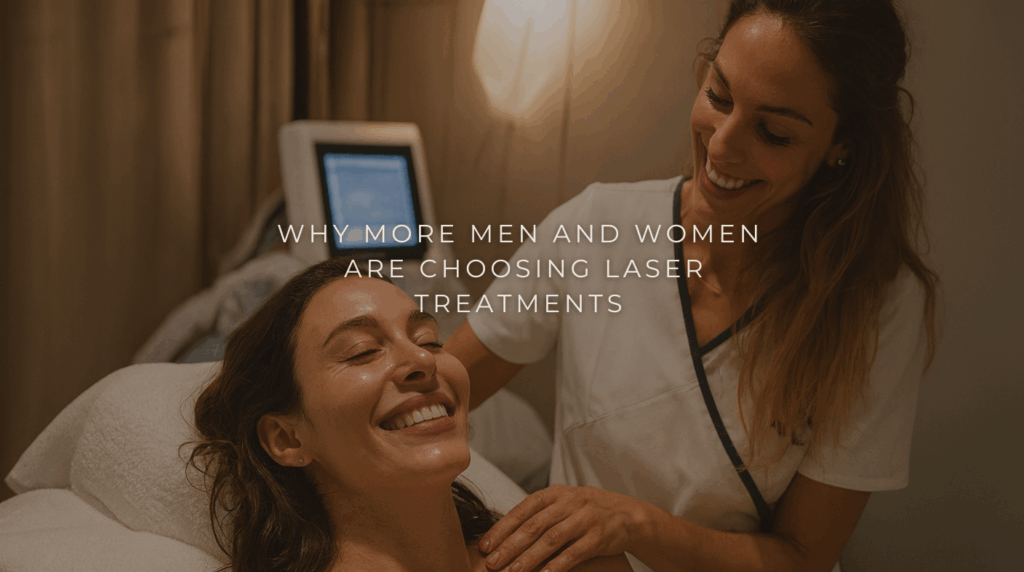Introduction: The Aesthetic Revolution
Two decades ago, only a small fraction of people would openly admit to getting cosmetic procedures. Laser treatments, in particular, were seen as expensive, risky, and reserved for celebrities or the ultra-wealthy. Fast-forward to today, and the story couldn’t be more different. The global cosmetic laser market, once valued at just around USD 1 billion, is projected to surge past USD 7.7 billion by 2035, growing at an impressive 18% annual rate.
In real terms, that means millions more consumers are embracing these treatments as part of their regular self-care. Recent studies show that about 9% of people worldwide have already tried laser hair removal, and in markets like China that number jumps to 23%—a dramatic shift from near-zero adoption rates just a decade ago.
In the United States alone, dermatology clinics performed over 270,000 laser hair removal procedures in a single year, and surveys by the American Society for Dermatologic Surgery reveal that nearly 70% of Americans now say they’re considering non-invasive cosmetic procedures, including lasers. What was once taboo has become mainstream, signaling not just a beauty trend but a full-fledged cultural transformation toward proactive, technology-driven self-care.
The Technological Leap — Safer, Smarter, and Faster

Minimizing Downtime — The Fractional Difference
Old-school ablative lasers demanded days of redness and recovery. Enter fractional and non-ablative lasers, which create micro-columns of controlled injury while leaving surrounding tissue untouched. The result: faster healing and minimal downtime — many patients return to work within 24 hours.
Inclusion and Safety for All Skin Tones
Earlier, laser use on medium-to-dark skin risked burns or hyperpigmentation. Modern systems such as Nd:YAG and Picosecond (Pico) lasers use longer wavelengths and ultra-short energy bursts that safely treat deeper pigment without overheating skin — broadening access across ethnicities.
Precision and Predictability — AI Integration
Next-gen lasers now pair with AI-driven imaging that maps skin tone, thickness, and texture irregularities. This data guides energy output and pulse duration for consistent, customized results, minimizing practitioner error and elevating patient confidence.
Related: Most Common Laser Hair Removal Areas For Men?
Women’s Shifting Priorities — Convenience Meets “Prejuvenation”
Efficiency and Lifestyle Value (Laser Hair Removal)
Laser hair removal (LHR) remains a cornerstone of the category, growing at a CAGR near 18%. It replaces a lifetime of shaving and waxing with long-term smoothness — a time-saving investment in daily convenience.
The Rise of “Prejuvenation”
Coined for millennials and Gen Z, prejuvenation means treating early signs of aging before they appear. Devices such as BBL HERO and MOXI offer gentle, collagen-stimulating maintenance in one’s 20s – 30s, addressing texture and tone before wrinkles set in.
Common Female Concerns
Modern lasers effortlessly target sunspots, melasma, acne scars, and fine lines — delivering visible improvements with little or no downtime, aligning perfectly with women’s multitasking lifestyles.
The Expanding Male Aesthetic Market
1. From Taboo to Self-Care
Once stigmatized, male aesthetic treatments are now symbols of self-discipline and professionalism. Men view laser sessions as investments in confidence and performance.
2. Grooming and Professional Image
- Beard sculpting creates permanent, sharp lines impossible to sustain with a razor.
- The “suit look” — smooth back and chest — enhances comfort and physique definition.
- Subtle rejuvenation (scar reduction, redness treatment, sun-damage correction) helps men look rested and competitive without overt change.
3. Most Popular Male Treatments
- Hair removal: back, chest, shoulders.
- Tattoo removal: for career resets or aesthetic refinement.
- Non-invasive tightening: jawline and neck contouring for sharper profiles.
Affordability and Accessibility
Economics of Scale
As competition among med-spas rises and technology costs fall, pricing has dropped dramatically. Once exclusive luxury, lasers are now accessible to middle-income consumers worldwide.
The At-Home Effect
FDA-cleared home IPL and mini-laser devices have made light-based care familiar. Although less powerful, they act as gateway tools — introducing users to professional-grade treatments.
Social Media Normalization
Platforms like Instagram and TikTok celebrate real-skin glow. Unlike filters, laser results are authentic and lasting, making them a cornerstone of the digital-beauty era.
Conclusion: The Future Is Bright
The marriage of advanced technology, inclusive safety, and self-care culture has transformed laser treatments from luxury to lifestyle. As innovations make them faster, safer, and more affordable, lasers will continue to shine as a foundation of modern aesthetic and wellness routines for everyone.




